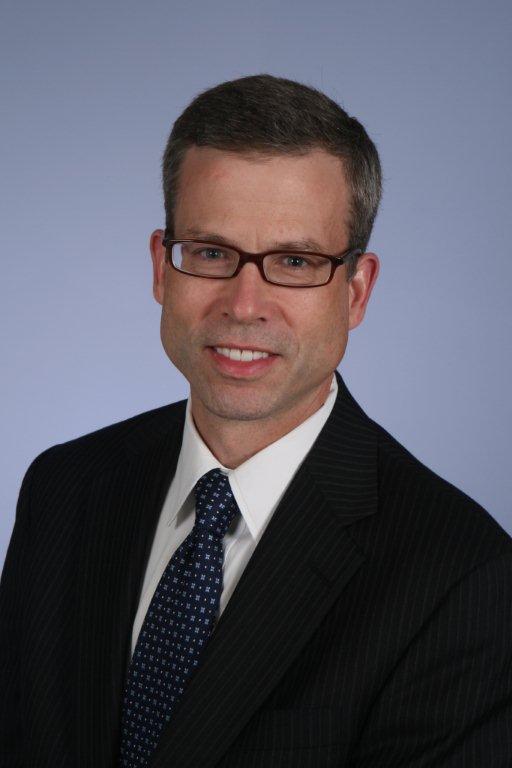Entries in wind farm noise (219)
9/6/10 What to expect when you're expecting wind farm construction
What should you know before you lease your land to a wind developer?
You should know you must consult an independent lawyer BEFORE YOU SIGN. You will need someone who can tell you how the contract says the lease holder can use your land before, during and after construction.
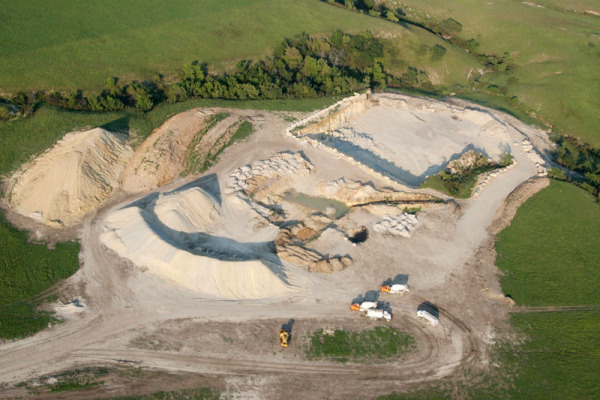
This picture shows the construction of a wind turbine project in Kansas.
Let's look closer..... 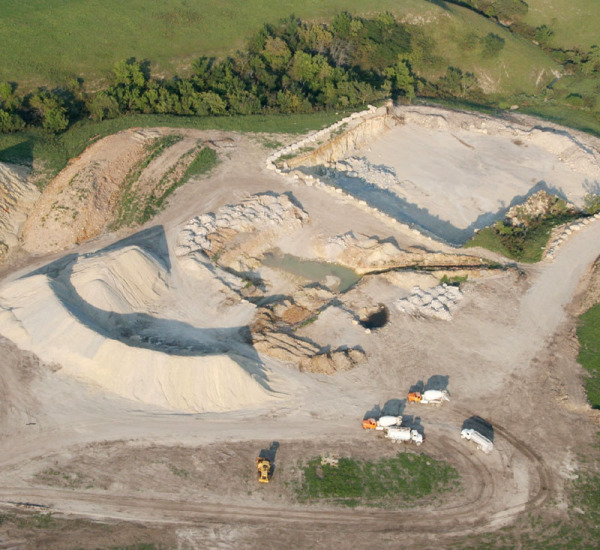
You should know how much of your land will be used during the construction phase and for how long, if you have any say at all in where the turbines will be sited, where the cables will be laid, and where the access roads will go. Only an independent lawyer can tell you what the contract says about this.
Look closer-

You should know that contracts may give the lease holder the right to go over, under, upon, along, and across your land, 24 hours a day, 7 days a week for the next 20 to 30 years. You should know what your rights are if changes, disputes or problems arise, and by what means problems may be resolved. An independent lawyer can tell you this.
Look closer..
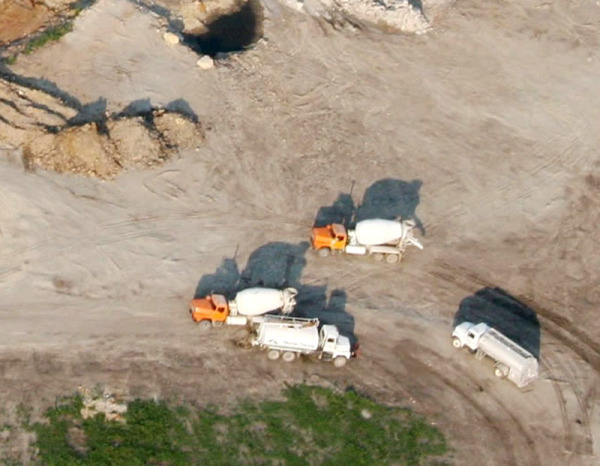
You should know that most lease agreements will be legally binding not just to you, but to your kids, any heirs, any future buyers, successors, executors, or assignees of any kind. You should know that most lease agreements require that ANYONE who owns the land after you or wishes to buy the land from you, will be also legally bound by the terms of this contract. Only an independent lawyer can tell you exactly what this means to the future of your property.

(To see more of this series of construction photos taken in Kansas, click here.)
9/6/10 Writing the Wind Rules: PSC Commssioner's opening remarks
PSC COMMISSIONER'S OPENING REMARKS ON WIND RULES, AUGUST 19, 2010, open public meeting in Madison at the Public Service Commission of Wisconsin
COMMISSIONER MEYER: Just on how we proceed with the wind siting question, given that we're going to take it up on Monday-- I guess I could do one of two things as we go on- what I'm prepared to do today was to sort of walk through each section and talk about changes that I think we should consider-- but think I'd like an opportunity sometime, whether it be today or Monday to maybe address more generally things like shadow flicker and setbacks--- I'm just wondering if you think that's more appropriate today or that's more appropriate Monday.
CHAIRMAN CALLISTO: No, I—what we're talking about here is the wind siting rules- it's the next agenda item so in terms of process -- before we make any opening statements, if any-- this is clearly going to be a multiple day process so I'm comfortable with whatever you're comfortable with-- we can-- we're clearly going to have some discussion today about principles, we may have some discussion about the structure of the rule and I also I do have some red lines that I think are relatively minor or are so important that I think we should start thinking about them today in order to meet our very aggressive time line.
So I was inclined to start walking through the rule and as major issues arise we can talk about them. If you have a different structure you are more comfortable I can do it that way as well.
MEYER I think-- I think I'm fine with that -- I think my thinking would be to just kind of walk through, see where you're at, see where you're at, you can see where I'm at see where I'm at--- but maybe the more generally speaking to -- you know--shadow flicker, noise or setbacks or things like that I think would want to understand better where I think the rule is going---
CALLISTO Sure. Sure.
[Speaking over each other-- inaudible]
MEYER: ---- a work in progress
CALLISTO: --- at least one more meeting, I would suspect.
COMMISSIONER AZAR Where I am, I've got-- I certainly have sort of discussions of the issues—but I have –again- put my lawyer hat on-- and literally have gone sentence by sentence and done a redline, I’m working with staff on where I think we can improve the rule. So I’m not sure how you guys want to take those line by lines because that will take a long time and-
CALLISTO: It will and that’s not—I don’t want to say it’s not workable – I mean—at-- at some level we to have to give the concepts to Deb – we’re going to have the [?] check off on the rule—not check off but after we get all these concepts to staff—which is going to evolve in our own---certainly in our own private space we’ll have walked through each of the lines and then we’re going to come back on that last day and see what’s there but ideally in this next meeting or two we can give them enough very clear guidance so that when we have that final presentation to us and we meet out here then it’s going to be nothing more than at that point, hopefully, fly-specking the rule.
AZAR: So Mr. Chairman are you recommending that I just give my word changes to staff and not raise them here?
CALLISTO If its--- I think we should discuss issues that are large here. If you have suggestions to staff I don’t think that violates any of our standing rules or obligations on minor word tweaks. That’s fine. I don’t know how you feel, Chairman Meyer.
MEYER Fine with that. My goal today would be to walk out of the room understanding the big changes that either of you want and you understand sort of the bigger changes that I would want, if there are smaller grammar kinds of things [inaudible] I’m not sure today’s the day for that.
CALLISTO Yeah, let’s see how far we get on that. It’s been a slow slog as I’ve gone through—and I’m sure you have so it may take us-- we may not get through the entire wind rule today.
"There will be individuals who live close to exisiting and future wind farms who will disagree with these standards we set. As I do in all siting decisions, I feel for these people, but I believe we will treat them fairly and balance their concerns with the state’s real and important drive to advance clean energy projects."
-PSC Chairman Eric Callisto
CALLISTO: [Reading] Opening statement. We are taking up the wind siting rules as I’ve noted in anticipation of approval and moving them to the legislature for review.
This has already been a wild ride and the commission hasn’t even weighed in. I want to thank all of those who helped to get us to this spot. First and foremost the wind siting council led by its Chair Dan Ebert and Vice Chair Doug Zweizig.
The Council has met over 20 times during its short existence. It has debated all the relevant topics and from my perspective has provided a very valuable recommendation to the commission.
My thanks as well to the hundreds of commentors who have shared their views with us.
This rule making is unlike any I’ve every been involved with and the critical eye brought to its promulgation by citizens across the state and the country will make it a better product.
Finally, my thanks to commission staff who have worked tirelessly in support of meeting the aggressive timeline I laid out for them. They have earned some rest but given how our discussion is going to go, they are not going to get it for a couple of days.
[Laugher]
CALLISTO: That the final Wind Council report was not a concensus document in every regard is not surprising. Nor has it diminished the value of their product. Were these issues so easy we would not have needed the passage of Act 40, a critically important mandate that took two legislative sessions and many modifications to pass.
Were these issues so susceptible to easy resolution we would not see them recurring in every instance when wind siting is discussed regardless of the forum.
They have been front and center and highly contested in decisions the commissioners made in every wind farm CPCN or CA.
And were these issues so easy we would not have now before us a substantial amount of credible evidence that supports balance as we move forward.
That balanced approach is often the hallmark of our best work here at the commission, and it surely will play a central role as we promulgate this rule.
My balancing of the real issues at stake will be guided appropriately by the enabling statute. Act 40 laid out a clear mandate to this commission. It requires us to set statewide standards for these smaller projects to insure statewide uniformity and to insure that clean, valuable wind projects continue to be built in Wisconsin.
The act puts a difficult but very important obligation on this commission. We are to create standards that by legislative design limit local government’s discretion. That is no easy pill for Wisconsin communities to swallow and I don’t take the responsibility lightly.
But the legislature has determined, and I completely agree, this is an issue of statewide importance.
In setting these standards we are not going to go as far as the wind advocates want, and we certainly will go farther than those who want to dramatically limit wind farm siting.
There will be individuals who live close to exisiting and future wind farms who will disagree with these standards we set. As I do in all siting decisions, I feel for these people, but I believe we will treat them fairly and balance their concerns with the state’s real and important drive to advance clean energy projects.
Commissioner Meyer?
" Our goal is to promulgate uniform wind siting rules that will allow the wind development community to successfully and responsibly propose and develop wind projects in Wisconsin to take advantage of favorable wind regimes."
PSC Commissioner Mark Meyer
MEYER: Thank you, Mr. Chairman.
[Reading] First and foremost thank you. There were so many of you that came together to get this work done in a timely way. The number of participants, council, particularly I want to thank the council, Dan Ebert and Doug Zweizig, chair and respectively for insuring meetings ran smoothly and the meetings were curteous and productive in the face of strong opposing positions.
I want to thank the members, Dave Gilles, Tom Green, Jennifer Heinzen, Andy Hesselbach, George Krause Jr. Lloyd Lueschow, Jevon McFadden, Tom Meyer, Bill Rakocy, Dwight Sattler, Ryan Schryver, Michael Vickerman and Larry Wunsch.
I want to make a special comment about Mr. Wunsch’s participation in the process, he’s a landowner who currently lives near a wind energy system, the promulgation of these rules will have no effect on his property but his input has been formative regarding the process and effects of siting decisions on individual properties and landowners.
Together the council represents over 900 hours of volunteer time that has be spent insuring these rules represent the interests of the stake-holders and Wisconsin citizens.
While I may not agree with all the recommendations of the council, I’m grateful and well informed by the work they have put into this effort.
I’d also like to applaud staff’s work on these rules. They’ve been tireless and committed to this process in a way that demonstrates the professionalism and dedication that this staff [inaudible] around the country on many important issues. Their work, commitment and professionalism is what allowed us and the council to reach concensus on many issues and develop a draft that captures the concerns and input of those stake holders. Deb Erwin, Dan Sage, Joyce Dingman [inaudible] and John [inaudible] Thank you.
While the chair has already gone through the processing path these rules have taken I want to highlight that it was a very open and inclusive process that started in 2009 with Wisconsin act 40 in September of 2009, statement of scope the following November, followed by public hearings in Fond du Lac, Tomah and Madison,a written comment period that ended July 7th 2010, which I should note we got over 1800 comments, which I have to say is more than I’ve ever seen in an individual case here at the commission in my six years.
Following that there were council meetings, 21 in all, that started in March of 2010 and ended on August 16th, 2010.
Going to the legislature, if you look at the newly created statutes it’s clear the legislature intended this to be an on going discussion.
The wind siting council is now a long standing body with an obligation to inform the commission on the promulgation of this rule as well as on an ongoing basis as we gather more information and learn more about wind siting and its effects on the people and communities [in] which they are sited.
Now not up for debate is whether there are sufficient wind resources in Wisconsin, whether wind should be considered as part of the states generation portfolio and whether the state or municipalities should create the rules for wind siting. These questions have been asked and answered.
Our goal is to promulgate uniform wind siting rules that will allow the wind development community to successfully and responsibly propose and develop wind projects in Wisconsin to take advantage of favorable wind regimes.
Our goal is to also identify how and when political subdivisions can create its own rules with respect to the siting of wind energy systems.
Wisconsin is heavily coal dependent and allowing the possibility of wind development is essential in diversifying the energy resources in our state.
We also have to balance the interests of wind developers with those of landowners. Both participating and non participating landowners. In particular, Act [40] requires us to specify the restrictions a political subdivision may impose on the installation or use of wind energy system, provide setbacks for reasonable protection from any health effects from noise or shadow flicker and to address decommissioning.
In addition the commission may address issues of visual appearance, lighting, electrical connections, the power grid, setback distances, maximum audible sound levels, shadow flicker and the proper means of measuring noise, interference with radio, telephone, television, as well as other matters.
Based on the comments received, the recommendations of the council and staff input, we’ll be addressing all the issues specifically as mandatory in discretionary issues outlined in Act 40 as well as notice compliance, stray voltage testing, compliance with electrical standards, emergency procedures, complaint process, political subdivision procedure, and commission procedure.
In addressing the Act 40 requirements, comments, council process of recommendations all propose what rule language thus meets all those issues.
Let me say at the outset this is meant to be and has been an open process and I’m open to discussion with my colleagues on this issues on how each of you think the language of the rule will best serve the interest we’re tasked with balancing.
Finally I want to acknowledge in setting these rules and making individual decisions in individual cases we ask people to make sacrifices for the good of the whole.
I’m comforted by the ongoing nature of this process as well as the commissions authority under proposed rule 128.02 to deviate from the rules in exceptional and unusual circumstances.
CALLISTO: Commissioner Azar?
"While reviewing the proposal rule, I was keenly aware of the distinctions between preventing the potential harm and mitigating that harm.
My recommendations seek to prevent the harm for the vast majority of the general public."-PSC Commissioner Lauren Azar
AZAR: This is one of the most difficult decisions I’ve made during my tenure as commissioner. While some issues that need to be resolved are easy, others are not.
Before I begin I’d like to thank the members of the wind siting council who worked hard to develop the recommendations before us, and the commission staff, they’ve done a stellar job with drafting this rule and staffing the council.
Let me say from the start, based on the record of this case, I believe the health of a small portion of the population could be adversely affected by wind turbines, primarily through noise and vibration.
Frankly there is a strong suggestion that these adverse effects could be serious for a small percentage of folks.
Unfortunately we don’t know precisely why these people are affected, we don’t know what percentage of the population is affected and we don’t have a correlation between the levels between the emissions and the adverse affects.
In short, there are a lot of unknowns. I will be recommending that we ask the wind siting council to investigate and make recommendations on several issues. Though our information is not currently complete, I believe there is a good reason to pass a rule now, recognizing it will be a work in progress.
My goal today is two fold; protect the public while simultaneously removing barriers for wind development. While some may think this balance is impossible, I do not.
Indeed the more information that we as a commission obtain, the greater likelihood that we can meet both ends of that goal. Accordingly, as we gather more information, I believe the commission can and should refine these rules.
Make no mistake. As wind energy is developed in Wisconsin, it will affect the residents living around the turbines. This commission cannot eliminate all of those effects. All of us bear burdens for the good of our society, but some bear burdens greater than others.
It’s sobering to have to determine the amount of burden that may be placed on a community. Based on our dialog today it may seem that we make these decisions with ease. Let me assure you that these are heart wrenching decisions. We make these decisions recognizing the sacrifices that will follow.
Indeed, I have heard from people living in existing wind energy developments who have—who state they have been adversely affected and we hope that these rules will address the issues that they have raised in future developments.
While reviewing the proposal rule, I was keenly aware of the distinctions between preventing the potential harm and mitigating that harm.
My recommendations seek to prevent the harm for the vast majority of the general public.
First, these rules will establish standards that must be complied with or there will be consequences. Additionally my hope is we develop rules that recognize that some people are particularly sensitive to the emissions from wind turbines. In these cases, the developer must mitigate that harm, or at least I believe so.
Should these mitigation techniques fail in these rare circumstances I believe we should pass rules that protect these particularly sensitive residents.
If after mitigation the wind energy system is causing significant and verifiable adverse health [inaudible] I will be proposing that the developer be required to purchase the protected party’s home at market value.
In conclusion I want to address two critiques that have been made about the process of this rule making.
First, there are allegations that the council members that were appointed do not fit the profile mandated by the legislature. Simply, I disagree with that allegation.
Second, several parties have asked the commission to delay promulgating these rules so that further information can be developed. I found there is a dearth of information on some of these issues which makes policy making on those issues difficult.
However, according to one of the briefs, there is around 600 megawatts of wind waiting to be developed and development is halted until this rule is completed.
While I like to make decisions based on complete information, it is unclear when we will receive that information, hence, I think we need to develop the rules that include safeguards addressing some of the unknowns while simultaneously allowing responsible wind projects to be developed.
I believe we can develop rules that accomplish both.
ABOUT THE PUBLIC SERVICE COMMISSIONERS
The PSC is composed of three full-time Commissioners who decide the cases brought to the PSC for changes in utility operations, rates and for construction projects after a complete and thorough review of all the records compiled in the case, including public comments.
Commissioners are appointed by the Governor and confirmed by the State Senate for staggered, six-year terms.
One of these Commissioners is appointed chairperson by the Governor for a two-year term. The Commissioners Office, under the direction of the Chairperson, has oversight of all PSC staff related activities.
9/2/10 Show me the safety net: PSC commissioner Lauren Azar's letter to legislators AND Show me the green jobs: Wisconsin wind employment figures wither under scrutiny AND What to expect when you're expecting 497 foot tall turbines: Construction begins on Wind Siting Council Member Bill Rakocy's new wind farm AND a letter from Maine that could be from Wisconsin
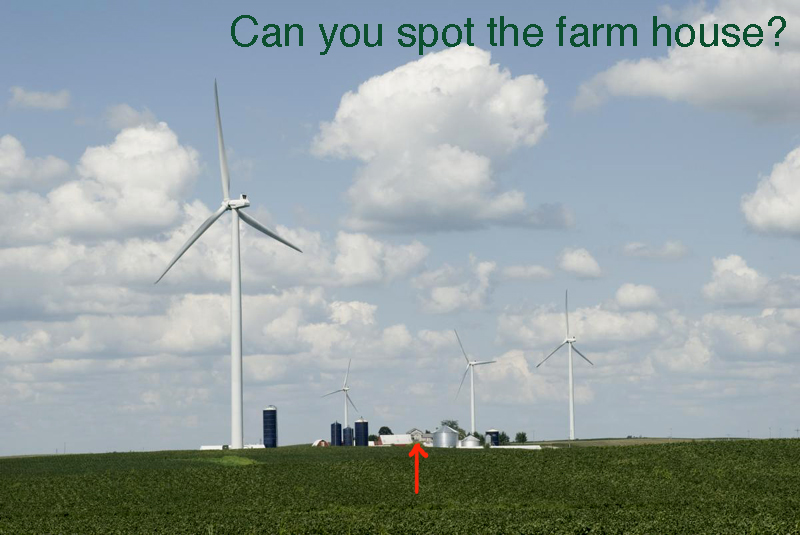
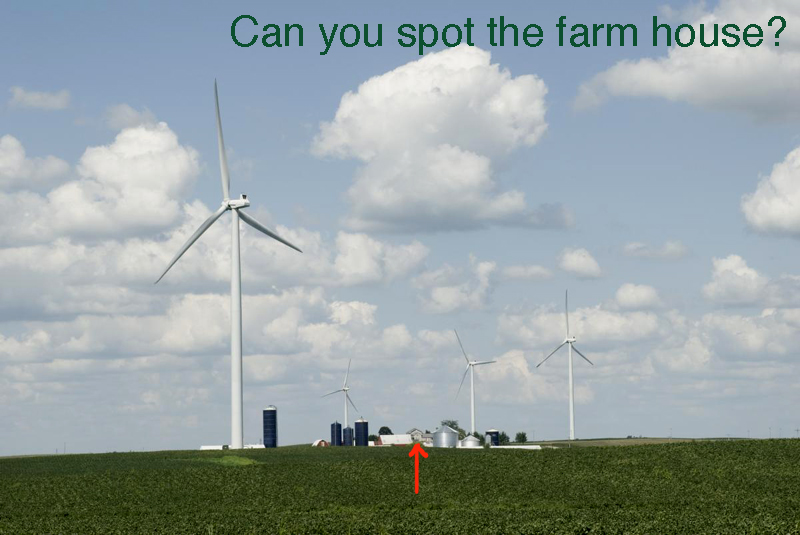
Wind turbines on a Wisconsin Farm
While I support the overall rule because it will promote the development of wind in Wisconsin, the rule fails to provide a much-needed safety net for people whose health declines because of a Wind Turbine located near their home.
-PSC Commissioner Lauren Azar
CLICK HERE TO DOWNLOAD THE FINAL WIND RULES FROM THE PUBLIC SERVICE COMMISSION
SOURCE: PSC DOCKET # 1-AC-231
From PSC commissioner Lauren Azar
To The Honorable Fred Risser The Honorable Michael Sheridan
The State Senate The State Assembly
State Capitol, Room 220 South State Capitol, Room 211 West
Madison, WI 53702 Madison, WI 53702
Re:Wind Siting Rules, Clearinghouse Rule 10-057
Dear Senate President Risser and Speaker Sheridan:
I write to explain my concurrence with the Commission’s rule on the siting of certain wind energy systems (Wind Turbines) in Wisconsin.
While I support the overall rule because it will promote the development of wind in Wisconsin, the rule fails to provide a much-needed safety net for people whose health declines because of a Wind Turbine located near their home.
The safety net I propose would be a minimal burden to wind developers while simultaneously protecting Wisconsin citizens who are sensitive to the noise emitted from Wind Turbines.
Among other things, 2009 Wisconsin Act 40 requires the Commission to develop rules that “provide reasonable protection from any health affects” associated with Wind Turbines. Wis. Stat. § 196.378(4g)(b).
There is substantial evidence that noise from Wind Turbines could negatively impact the health of a small percentage of the population.
To better ensure compliance with Act 40’s mandate, I proposed the following safety net: under limited circumstances, the owner of a Wind Turbine must purchase, at fair market value, the home of someone who can prove that a nearby Wind Turbine is directly causing a significant adverse health outcome. [1]
Unfortunately, at this time, we cannot accurately identify the precise line between safe levels of noise from Wind Turbines and those levels that will negatively affect human health.
Nor do we know why a small percentage of the population is affected more negatively by Wind Turbines than the rest of the population.
As new information becomes available, the Commission can revise this rule.
While more study is needed to better understand the full health impacts of Wind Turbines, it is important that we establish some remedy for the people who can prove that their health is being compromised by nearby Wind Turbines before the Commission has an opportunity to revise this rule.
To be clear, this safety net does not include awarding damages to the injured party; instead, it allows the injured party to move quickly from the area, thereby abating health concerns.
The safety net would be limited to landowners who provide evidence (in the form of a certification) from a licensed Wisconsin medical doctor that one or more Wind Turbines have directly caused a significant adverse health outcome on the injured party.
The only impact to the owner of the Wind Turbine(s) would be the need to resell the house.
Hence, the proposed safety net would not be an onerous requirement on the Wind Turbine owner and should not hamper wind development in Wisconsin.
The safety net could be structured as follows:
“PSC 128.XX Individual Hardships. If the owner of a nonparticipating residence experiences adverse health outcomes that are shown to be the direct result of the operation of a wind energy system, the owner of the nonparticipating residence may petition the political subdivision for mitigation of the adverse health outcomes.
The petition for mitigation shall be referred to the Commission, which may order mitigation of the adverse health outcomes.
A medical doctor licensed in the State of Wisconsin shall attest that that one or more wind turbine(s) have caused a significant adverse health outcome on the injured party before any relief may be granted under this section.
Mitigation may include requiring the owner of the wind energy system to purchase the nonparticipating residence at fair market value.
Note: The Wind Siting Council may make recommendations with respect to the form and type of information that is required to show that adverse health outcomes are the direct result of the operation of a wind energy system.
Absent a safety net provision like this, it is unclear how an injured party could obtain mitigation of adverse health outcomes from a Wind Turbine owner.
If they are unable to sell their property for fair market value, injured parties would be forced to file suit against the owner of a Wind Turbine.
This could require the injured party to incur significant legal costs that are not recoverable in a lawsuit and may dwarf the value of the home.
The State of Wisconsin should not place its citizens in this position.
In conclusion, while I concur with the rule as a package, I remain concerned that this rule fails to protect the most vulnerable of our community and, therefore, I must qualify my support of this important rule. When this rule is referred to the appropriate standing committees, please forward a copy of this letter with the rule.
Sincerely,
Lauren Azar
Commissioner
[1] The operation of this safety net proposal is not unprecedented. The Commission recently identified that the purchase of property at fair market value was a potential remedy for two landowners affected by a large wind energy development. Because the two landowners had a significant number of Wind Turbines within view from their homes, the Commission required mitigation, including the possibility that the utility purchase the properties at fair market value. The utility did not object to this potential remedy and has since purchased the properties.
SECOND FEATURE
In Wisconsin, Facts About ‘Green Job’ Creation Elusive as the Wind
SOURCE MacIver News Service | September 1, 2010
By Bill Osmulski
MacIver News Service Investigative Reporter
[Madison, Wisc...] Although they are touted and promoted by policy makers and opinion leaders across the state, accurately defining and keeping track of ‘green jobs’ has proven nearly impossible in Wisconsin.
Take, for example, ‘green jobs’ associated with the wind industry.

Wisc. Governor JimDoyle (D)
“Clean energy technology and high-end manufacturing are Wisconsin’s future,” Governor Jim Doyle said in his final State of the State address. “We have more than 300 companies and thousands of jobs in the wind industry.”
That statistic is impossible to verify.
The State of Wisconsin does not track those companies nor the jobs within the industry.
When contacted, the Office of Energy Independence (an agency created by Governor Doyle in 2007) directed MacIver News to Wisconsin Wind Works, a self-described “consortium of manufacturers representing the wind manufacturing supply chain within Wisconsin.”
The advocacy group maintains an online wind energy-related supply chain database, although a routine examination of the data proved just how unreliable the figures are.
When the online, searchable database was utilized earlier this summer, it listed 340 companies in Wisconsin connected to the wind industry, a fact which, without additional investigation would appear to be in line with the Governor’s statement.
However, further examination showed many of those companies were not currently serving the wind industry and were only listed because they someday could serve the wind industry.
For example, the database listed 38 manufacturers, but only 24 of them have anything to actually do with the wind energy sector presently.
Of those 24 Wisconsin manufacturers, only eight were categorized as primary suppliers.
Another four companies were listed as both primary and secondary suppliers. A MacIver News Service reporter contacted all eight primary suppliers and the four companies listed as primary/secondary suppliers in our initial query and what we found further eroded the credibility of Governor Doyle’s claims.
When contacted, the companies listed as both primary and secondary suppliers all described themselves merely as secondary suppliers. That means they produce products that are not exclusive to the wind energy.
For example, Bushman Equipment manufactures lifts that move heavy pieces of equipment, which, among many other uses, can be used to handle wind turbines.
Wisconsin Wind Works’ database is not only generous with the number of companies within their supply chain it associates as being primary suppliers, there are issues with the actual job numbers listed for each company as well.
Many of the figures are either inflated, the jobs are not located in Wisconsin, or they cannot be tied to wind energy.
For example, Rexnord Industries was one of the eight Wisconsin manufacturers listed in our query as directly serving the wind energy industry. The database shows the company has 6,000 employees.
Yet a Rexnord official told the MacIver News Service that the company only has 1,500 employees in Wisconsin, and only five of those have jobs which are directly tied to the wind industry.
Wisconsin Wind Works’ database says Orchid International has 600 employees, but a company spokesperson told MacIver it only has 150.
Amsoil Inc. in Superior has 236 employees listed in the Wisconsin Wind Works database, but a company representative told the MacIver News Service that only 6 of them work on wind energy-related products.
In all, at the time of our search, the database claimed 7,632 jobs among the eight manufacturers that were current primary suppliers to the wind industry. Yet, the MacIver News Service was only able to identify 31 jobs at those companies which were specifically tied to wind energy related products.
Manufacturers told MacIver News that other employees might work on wind-related products occasionally, but it does not represent the bulk of their workload.
Another 1,077 workers are listed among the secondary suppliers and we did not investigate that claim.
VAL-FAB, one of the companies listed as both a primary and secondary supplier, explained to MacIver News that it initially had high hopes for the wind energy industry that never materialized. The company specializes in fabrication for the energy sector.
William Capelle, Director of Business Development at VAL-FAB, said “At first we thought we might be able to manufacture the actual towers, but it turns out 90 percent of those are imported from Spain.”
Since the MacIver News Service first examined the Wisconsin Wind Works database, the number of companies listed has increased to 360.
A reporter attempted to contact the organization for comment about the veracity of their data, but Wisconsin wind Works, which solicits members by selling itself as the
“preferred partner of wind energy professionals,” did not respond.
They are, however, holding a Wind Energy Symposium in Milwaukee on October 13th.
Meanwhile the Office of Energy Independence continues to pursue the Doyle Administration’s green energy policies.
As Doyle said during his final State of the State address, “anyone who says there aren’t jobs in the clean energy economy had better open their eyes.”
There is no doubt that some jobs in the wind industry exist in Wisconsin. The accurate number of these ‘green jobs’ is proving to be, at best, elusive
Representatives of Doyle’s office did not respond to repeated request for comments regarding the information contained within this article.
THIRD FEATURE
What to expect when you're expecting wind turbines close to 500 feet tall:
Photos from the Town of Glenmore in Brown County Wisconsin
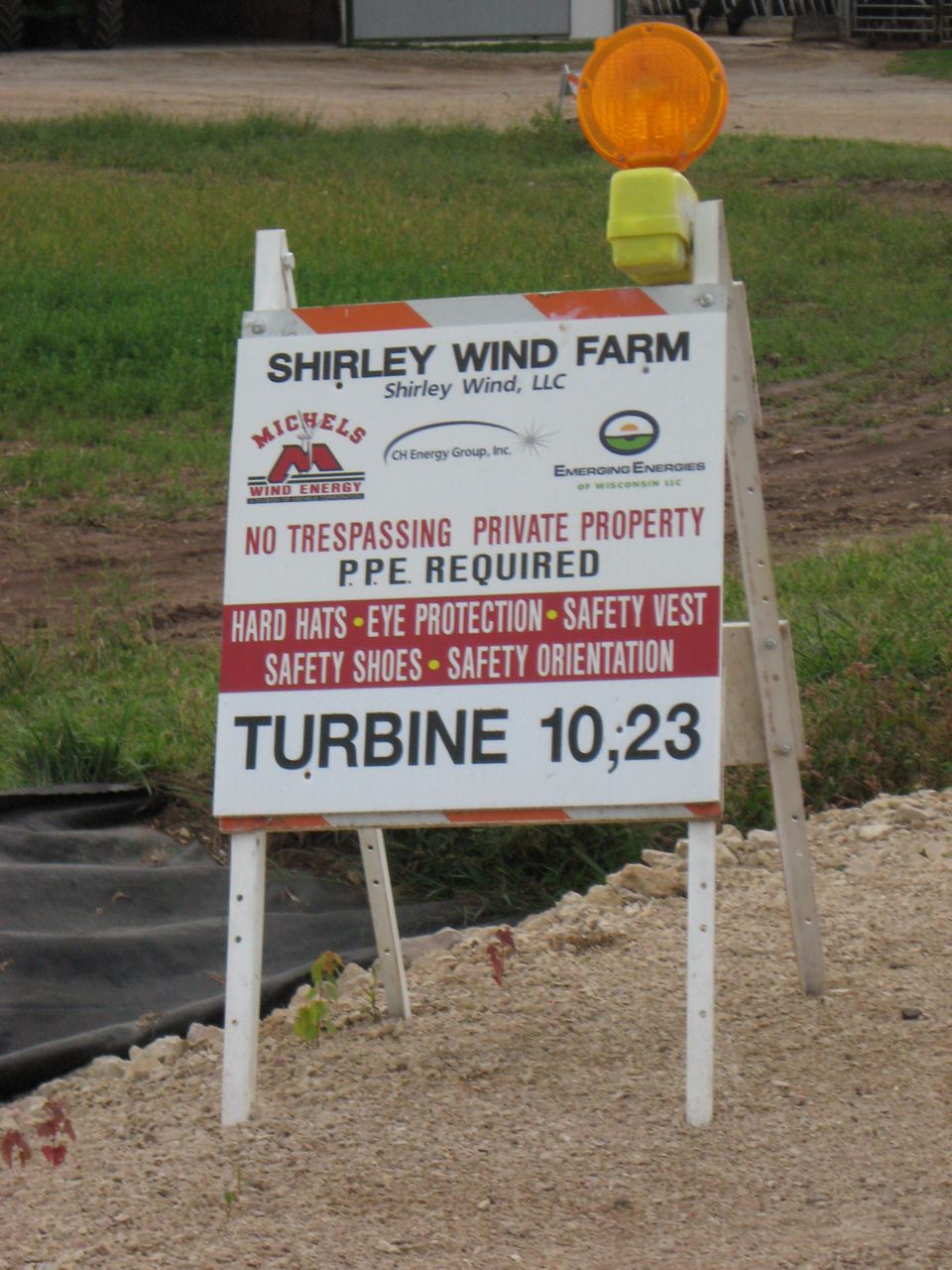

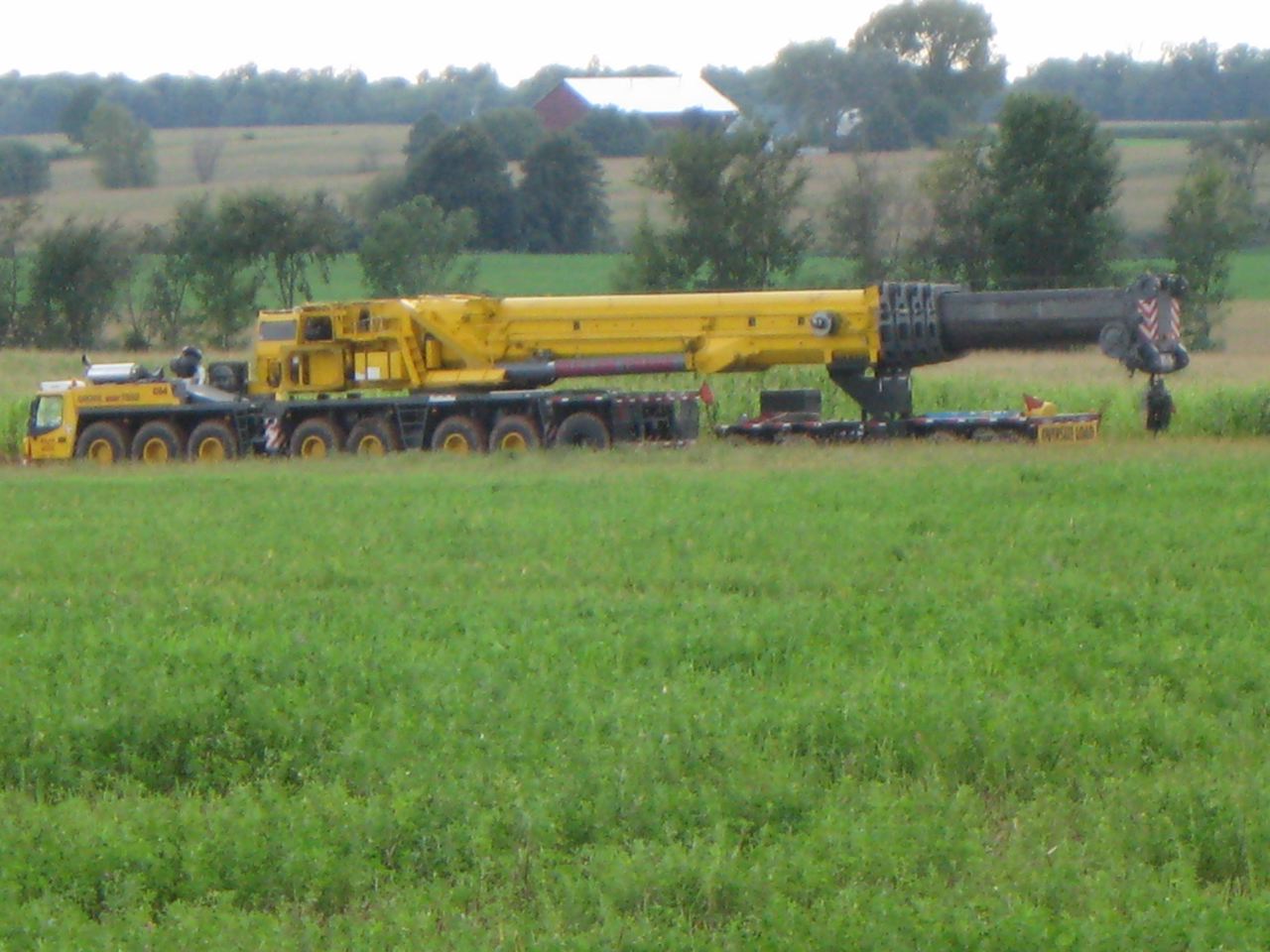

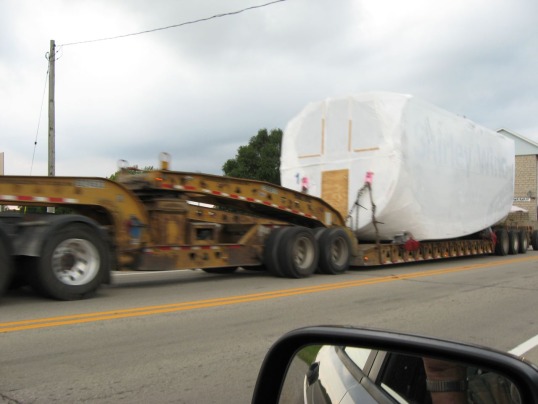




Construction underway on Brown Co. wind farm
8 turbines in Town of Glenmore
TOWN OF GLENMORE - Construction is underway on Brown County's first industrial wind farm. Eight wind turbines are being built in the Town of Glenmore in southern Brown County.
The developer, Wisconsin-based CH Shirley Wind, LLC, says construction is to be completed by the end of the year. The 8 wind turbines are expected to generate enough power to supply approximately 8,000 homes per year.
The wind turbines will stand 492 feet tall.
"We are hoping to generate power by the end of September on at least one turbine. Hopefully all 8 by the end of October," said John Roberts, the construction manager for the project.
The turbines will also provide some extra income for the four families hosting them on their properties.
"They're not just doing it for the money. They like the idea of being green and using their farm for something like this," said Roberts.
Though, like most wind developments, a number of neighbors aren't too happy with the project.
"The projects right now, with the setback rules we have, are just too close for people to live in that proximity to an electrical generator of that size," said Jamie Fletcher, who lives in the Town of Glenmore.
Fletcher has been working to stop all large-scale wind development in southern Brown County. She believes wind turbines cause health problems, mainly from all the noise they make.
"Insomnia, shadow flickers, causing everything from nauseasness to epileptic seizures and I don't want to put my family through that or my animals," said Fletcher.
However, a state committee that studied the issue recently found no health effects from the turbines. Those working on the project in Glenmore also say the turbines being built there have new technology that make them less noisy.
"They're a little bit higher and they turn a little bit slower and because they turn slower, there is actually less noise," said Roberts.
The Shirley Wind project is not part of a highly publicized proposal to build 100 wind turbines in several Brown County communities. That proposal, known as the Ledge Wind Energy Project, has not been voted on yet by the state Public Service Commission. It is being developed by a Chicago-based company called Invenergy.
Opponents, like Jamie Fletcher, say the 8 turbine project in Glenmore will be an example of why other projects should be stopped.
"Whatever happens out here, I pray it's a wake-up call for the rest of the state," she said.
Both sides will continue to debate whether wind development is what is best for Wisconsin.
THIRD FEATURE: A LETTER FROM MAINE:
Note: Like Wisconsin, Maine also passed law that streamlines wind siting for developers by removing local control and relaxing restrictions. Here is what Maine residents are saying two years later:
Though I’d suspected the news would eventually arrive, I still wasn’t ready when I got it.
Word came recently that a wind speed test tower, the harbinger of a future wind turbine development, would soon be erected just north of my property in Lexington Township.
Two more associated towers are to be located in Concord, the next township to the east.
My town is now among the unfortunate that have been infected with the virus of wind-energy sprawl. Industry activity, lately, has been substantial in our area and our town lies within the new expedited permitting zone. It was bound to happen.
I’ve been working to stop wind-sprawl on Maine’s rural landscape for almost a year.
However, until now, I’ve not known the full complement of the frustration, indignation and betrayal felt by so many Mainers seeing their lives turned upside down by the reckless and uncaring intrusion of this industry on their homes and property — all with the complicity of our state government.
I have worked beside many of these people for months, but only now do I fully understand their perspective.
My wife and I believed we’d spend the rest of our days in Lexington, living simply, and feeling fortunate to be surrounded by Maine’s unique beauty and the increasingly rare silence of a rural land.
The governor and Legislature, however, sealed our fate in 2008 when they gifted the wind industry with easy permitting terms for a scheme that is unlikely to produce benefits greater than what will be stolen from present and future generations.
Under the new laws, property owners have been left with little power to protect themselves. I will, nevertheless, continue to fight this industry’s assault on rural Maine, perhaps, with a keener awareness of what we stand to lose.
Alan Michka
Lexington
9/1/10 Sow the wind turbine, reap the crop damage AND...Wind Action Asks the hard Question: How compatible are wind farms and agriculture? AND Wind Turbines in the News AND A new understanding about wind turbine noise AND A letter from a participating wind project landowner from Columbia County to landowners in Brown County
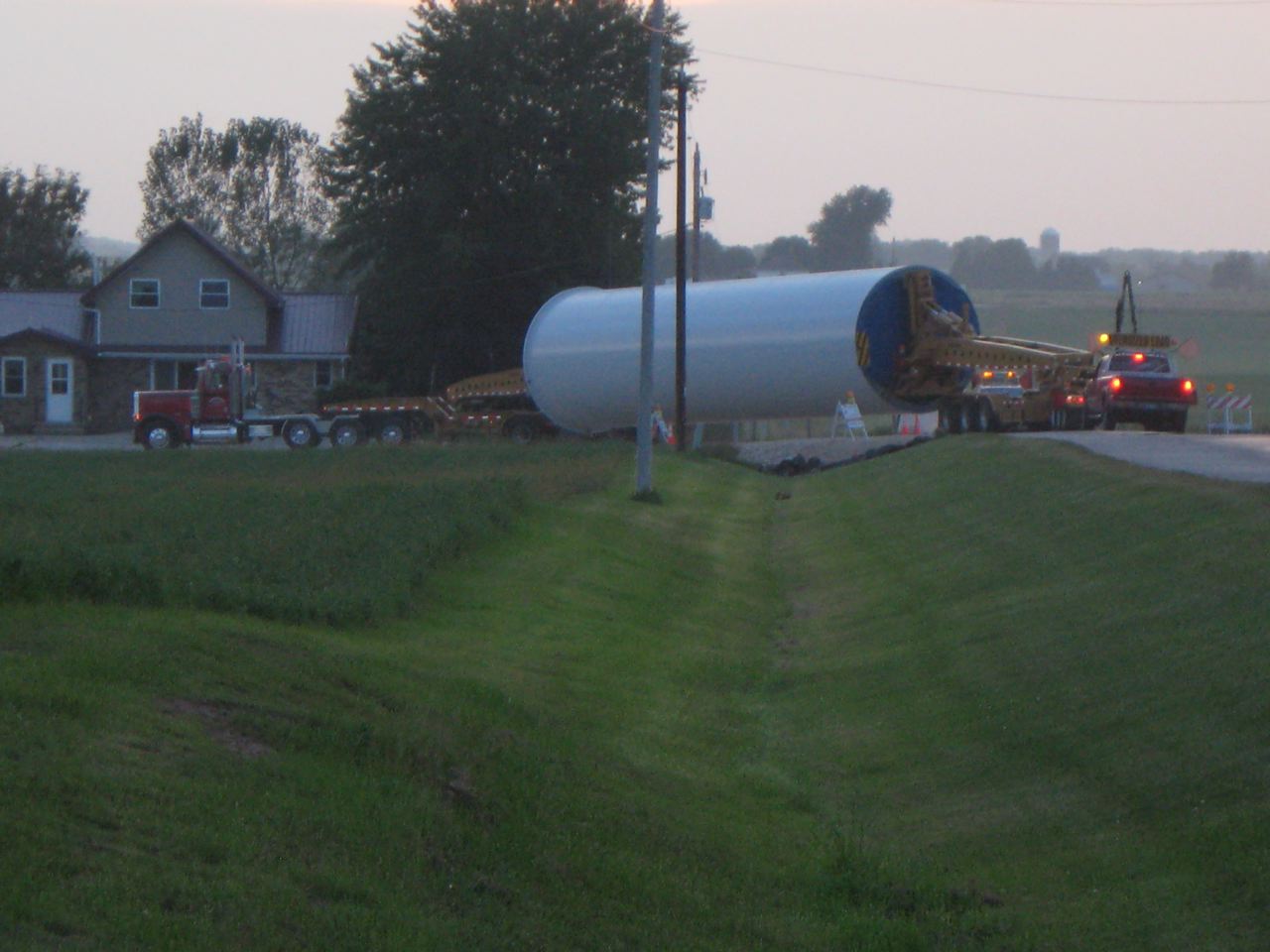
 Construction begins on what will be the tallest wind turbines in the state. Town of Glenmore, Brown County Wisconsin. More photos throughout this post.
Construction begins on what will be the tallest wind turbines in the state. Town of Glenmore, Brown County Wisconsin. More photos throughout this post.
Below is A letter from a participating landowner in the Glacier Hills project which is under construction in Columbia County. He address it to Brown County landowners in an area where Invenergy wants to site a large project called "Ledge Wind"
SOURCE: PSC Docket # 9554-CE-100
To the landowners in the Ledge Wind Project:
If you believe wind turbines are a good fit for a farm operation, a free source of clean energy, and a benefit to your community, I invite you to come to the Glacier Hills Project and witness the total devastation occuring during construction.
Seeing firsthand what is happening here would turn any responsible landowner's stomach.
Heavy rains have created erosion that will take years to repair.
The number of huge construction equipment and trucks burning fuel is staggering.
Good productive farmland is being ripped apart, and will never be the same.
The level of disgust is even affecting the most loyal supporters of this project.
Hatred of this project is growing worse as each day passes, and we will be forced to live with this for the rest of our lives, all because a few irresponsible landowners, myself included, were taken in by wind developers lies.
All this for chump change.
Gary Steinich
Cambria, Wisconsin

Is wind "farming" compatible with agriculture?
August 25, 2010
We're frequently reminded that wind energy and agriculture are compatible land uses. Farmers who lease sections of their crop land for wind development can continue working the soil right up to the towers and earn extra revenue for farming expenses. A win-win business opportunity, right? Not so fast. In this two-part series, Windaction.org examines the wind-farming relationship in the State of Illinois and tests the claim that the two are a good fit. As with so many topics involving wind energy, there is another story behind the story.
Back in 2007, Windaction.org posted a document entitled "What have I done?" The piece, written by Don Bangart of Chilton, Wisconsin, was based on a two- hour interview he conducted with a farmer in Northeast Fond du Lac County who agreed to lease a portion of his land for wind development. In the interview, the landowner makes several observations including this about how his land was managed:
"I watched stakes being driven in the fields and men using GPS monitors to place markers here and there. When the cats and graders started tearing 22 foot wide roads into my fields, the physical changes started to impact not only me and my family, but unfortunately, my dear friends and neighbors. Later, a 4 foot deep by 2 foot wide trench started diagonally across my field.
"A field already divided by their road was now being divided again by the cables running to a substation. It was now making one large field into 4 smaller, irregularly shaped plots. ...We soon realized that the company places roads and trenches where they will benefit the company most, not the land owner. ... All of the rocks we labored so hard to pick in our youth were replaced in a few hours by miles of roads packed hard with 10 inches of large breaker rock. Costly tiling we installed to improve drainage had now been cut into pieces by company trenching machines."
The Wisconsin farmer's experience is not unique.
Illinois has some of the best farming soil in the world with McLean County, Illinois rated #1 for the darkest, blackest most productive soil in the world.
But after extensive land moving and excavation needed to build roads and erect the turbines, farmers tell Windaction.org that the ground is never the same afterward. The fertile soil around the towers is mixed with subsurface clay and compacted resulting in lower crop yields. Depending on the lease terms, developers may compensate landowners for crop reductions but payments are often not passed on to tenant farmers who suffer the actual losses.
Since compaction is assumed to be a construction-related impact, crop-loss payments are often time-limited up to five years. However, every time turbines require maintenance, the massive crane is brought back to the site making compaction an ongoing concern throughout the life of the project. And it's not limited to existing roads or turbine pads. Turbine maintenance crews prefer to crawl across fields -- flattening crops and ground -- for quicker access to turbines needing service.
If drainage tiles are cut or damaged during construction, you're apt to see farmers working around ponds that were previously nonexistent. Or worse, adjacent fields not under lease can flood. With competition for rentable farmland so fierce, local tenant farmers risk losing their farms if they complain.
Soil compaction and drainage issues are serious concerns, but some might argue their effects are localized, and thus manageable. But that cannot be said about the impact of wind turbines on aerial spraying -- a subject that gets very little exposure.

The ability to secure aerial spraying services is limited in areas where turbines are standing.
The message on the Illinois Agricultural Aviation Association (IAAA) website is clear:
"...farmers with wind generators may lose the option of aerial application of farm protection products, seed, fertilizers, etc. on their farm ground. Possibly more significant is that their neighbor farmers, who have no wind generator(s) and consequently no income from them, stand to lose that option as well.
"Some proponents of wind farms tend to dismiss this possibility out of hand, with the explanation that "those guys can fly around them with no problem," or "just get a helicopter to do it." Others say that ground application can still be effectively performed so the aerial option is insignificant. Unfortunately, it is just not that simple. Sometimes weather problems and/or timeliness of application dictate an application from the air.
"The fact is, it is dangerous to fly within the confines of a wind generator farm."
As more and more towers go up, less and less fields can be sprayed. Experienced pilots can feel the wake effect of the towers from several miles away. Such turbulence is dangerous to fly through.
Helicopters may be recommended because they travel at slower speeds and can work in more confined spaces but they can't carry the same loads meaning more trips at higher costs. There are far fewer helicopters in the State (under 10 in total) so timely availability is a critical issue.
Some farmers try ground applicators but aircraft can cover crops faster and more efficiently than any ground rig. In cases of Asian soybean rust, farmers could experience an 80-100% yield loss if not treated within a week. Aphids or spiders mites can destroy a field within days. If infestations occur during wet years ground equipment on wet soil will cause compaction or ruts that lead to erosion.
Illinois County Boards tasked with approving new wind development appear willing to accept that aerial applications are still possible but with more difficulty and at a higher cost (most spray policies charge premiums up to 50% above standard costs on fields within a mile of the towers, whether a participating landowner or not). What they do not seem to realize is that as more wind farms are permitted, the cumulative effect will lead to fewer and fewer fields that can be sprayed, making total crop loss a real possibility.
Since crop insurance will not cover the farmer in cases of insects or plant disease where damage is "due to insufficient or improper application of pest control measures or disease control measures", crop loss could lead to significant financial losses for farmers.
Illinois farm land has nearly 1900 megawatts of wind turbines installed across thousands of acres of farm land and thousands more slated for development. Absentee landowners may be gaining financially from the development, but the idea that "wind farming" is a compatible agriculture use is more myth than reality in Illinois.
Special thanks to Rick Reed, president of IAAA, who provided valuable information on aerial spraying.
Wind Turbines in the News
For the latest national and international wind news visit
News
GREEN PARTY OF CANADA CALLS FOR WIND TURBINE HEALTH STUDY:
Source: Green Party of Canada Website
Considerations:This motion, in calling for a study on the human health effects of wind turbines, would create a new policy and could potentially call into question some of the party's policies on significantly increasing the amount of energy produced through wind turbines.
Motion Preamble:WHEREAS the Green Party of Canada recognizes the vast potential for wind energy in Canada;
WHEREAS the Green Party of Canada with the Canadian Wind Energy Association has set goals for Canadian wind energy generation;
WHEREAS many citizens in communities with wind turbines claim to be experiencing sleep deprivation, headaches, and heart complications related to wind turbines;
WHEREAS one of the largest obstacles preventing accelerated wind energy development is resistance from citizens near planned turbine sites;
WHEREAS the largest investment Canadians make, their home, is affected as much by real health risks as perceived ones;
WHEREAS many provincial governments have compromised their objectivity with respect to wind energy development;
WHEREAS the Green Party of Canada considers healthy people and healthy communities as necessary for a strong Canada;
Motion Operative:THEREFORE BE IT RESOLVED that the Green Party of Canada seeks to have Health Canada initiate an epidemiological study on the human health effects of wind turbines in the interests of public health and safety.
Dong giving up on land-based turbines
Mass protests mean the
energy firm will look offshore
SOURCE: The Copenhagen Post Online
September 1, 2010
State-owned energy firm Dong Energy has given up building more wind farms on Danish land, following protests from residents complaining about the noise the turbines make.
It had been Dong and the government’s plan that 500 large turbines be built on land over the coming 10 years, as part of a large-scale national energy plan. This plan has hit a serious stumbling block, though, due to many protests, and the firm has now given up building any more wind farms on land.
SOURCE, ” On the Level: Quarterly Newsletter of the Vestibular Disorders Association (Summer 2010, p. 9)“Wind Turbines Can Affect Inner Ear Function,
Scientists have determined how infrasound from wind turbines may influence inner ear function.
An increasing number of people living near wind turbines report a group of symptoms termed “wind turbine syndrome” that include sleeplessness, dizziness, fatigue, ear pain and pressure, difficulty concentrating, and headache.
Up until now, many scientists who study hearing claimed that noise from wind turbines couldn’t be harmful because it occurred at a frequency too low for most people to hear.
Researchers at Washington University in St. Louis, Missouri successfully challenged this conventional wisdom that “what you can’t hear won’t hurt you.” They noted that one type of inner-ear sensory cell behaves differently when encountering infrasound.
Usually these cells respond to sound by contracting and expanding proteins within their walls, amplifying vibrations, which in turn stimulate other sensory cells to send electrical signals about sound to the brain. However, the proteins do not respond in the same way to infrasound and instead actively prevent stimulation of the cells that transmit sound signals.
So, while the brain may not receive information about sound, a physiological response to infrasound has occurred in both the cochlea and the other sensory structures in the inner ear such as the saccule, possibly explaining the unfamiliar sensations experienced by some people.
Reference:
Salt AN, Huller TE. “Responses of the ear to low frequency sounds, infrasound and wind turbines.” CLICK HERE TO DOWNLOAD Hearing Research 2010 Sep 1;268(1-2):12-21. Epub 2010 Jun 16.
8/31/10 ESCAPE FROM WISCONSIN: New PSC wind rules: Non participating homeowners setback: Forty story turbine 1240 feet from your house, 440 feet from property line, 50/45 dbA allowable noise, 30 hours allowable shadow flicker. Hope you like it!
Bucky can you hear me?
New PSC wind rules: Non participating homeowners setback: Forty story turbine 1240 feet from your house, 440 feet from property line, 50/45 dbA allowable noise, 30 hours allowable shadow flicker, hush money option for those living within half mile.
FIRST FEATURE
SOURCE: PSC PRESS RELEASE at wisbusiness.com
PSC: Finalizes wind siting rules
8/30/2010
Contact: Teresa Weidemann-Smith, (608) 266-9600
Uniform Standards Head to the Legislature
MADISON - The Public Service Commission of Wisconsin (Commission) today finished its work on administrative rules governing the siting of wind turbines in Wisconsin. The rules were drafted in response to 2009 Wisconsin Act 40, recently-enacted legislation directing the Commission to promulgate rules that specify the restrictions local units of government may impose on the installation or use of wind energy systems.
“I am happy to have these rules completed,” said Commission Chairperson Eric Callisto. “Establishing clear and consistent siting standards is critical to removing the confusion that currently surrounds non-utility wind projects in Wisconsin.”
The Commission’s rules will function as a uniform ceiling of standards to guide the local regulation of wind siting, operation, and decommissioning for projects less than 100 megawatts in generating capacity. The rules specify how a political subdivision can establish setback requirements, noise and shadow flicker standards, and mechanisms that give non-participating landowners a stake in wind energy projects sited in their area. The rules include the following provisions:
Notice Requirements. At least 90 days before filing an application, the wind energy system owner must give notice to landowners within one mile of proposed wind turbine locations.
Noise Performance Standards. A political subdivision can require wind energy systems to be sited and operated in a manner that does not exceed 45 dBA during nighttime hours and 50 dBA during daytime hours. Noise limits will be measured from the outside wall of non-participating residences and occupied community buildings.
Shadow Flicker Performance Standards. A political subdivision can require wind energy systems to be sited and operated in a manner that does not cause more than 30 hours per year of shadow flicker for non-participating residences or occupied community buildings. If a wind energy system causes more than 20 hours per year of shadow flicker, a political subdivision can require the wind energy system owner to install mitigation measures for affected landowners, at the expense of the wind turbine owner.
Setbacks. A political subdivision can impose minimum safety setbacks of 1.1 times the maximum blade tip height of a wind turbine for participating residences, non-participating property lines, public road rights-of-way, and overhead communication and electric transmission or distribution lines. Setbacks of up to 3.1 times the maximum blade tip height of a wind turbine may be established for nonparticipating residences and occupied community buildings.
Good Neighbor Payments. The rules allow local units of government to require wind energy system owners to provide monetary compensation to non-participating landowners located within one-half mile of a wind turbine site. A political subdivision may not require these payments for non-participating landowners to exceed 25% of the payments being made to a landowner hosting a wind turbine in the project.
Complaint Resolution. The rules establish complaint resolution requirements for wind energy system owners, and a process for requesting political subdivision review of unresolved complaints. A political subdivision’s decision on review of a complaint is appealable to the Commission.
The Commission’s action today caps off six months of intense work in developing uniform wind siting rules for Wisconsin. As part of its process, the Commission established a 15-member Wind Siting Council, which, after months of deliberations, submitted its recommendations to the Commission earlier this month. The Commission also held public hearings earlier this summer in Fond du Lac, Tomah, and Madison, and accepted over 1800 public comments into the record. The Commission’s rules now head to the Legislature, where the presiding officer of each house will have 10 days to refer the rules to a standing committee for review.
SECOND FEATURE
PSC Sets new rules for wind farms
SOURCE: Green Bay Press-Gazette, www.greenbaypressgazette.com
August 31, 2010
By Tony Walter
Wind turbine siting rules approved Monday by the Wisconsin Public Service Commission likely will have little impact on a Chicago-based company’s attempts to build a 100-turbine wind farm in southern Brown County.
The PSC established guidelines for local governments to set restrictions on projects less than 100 megawatts in generating capacity.
However, the Ledge Wind project proposed by Invenergy LLC in the towns of Morrison, Holland, Glenmore and Wrightstown would exceed 100 megawatts. The company submitted its application to the PSC last year but was told to make some changes.
Invenergy officials have said they would wait for the new siting rules before resubmitting their application because they believed the rules might affect their project. Kevin Parzyck, project manager for the Ledge Wind farm, was not available for comment Monday.
The new rules could affect other wind turbine expansion in Brown County.
The rules require wind energy system owners to give 90 days notice about the filing of their turbine proposal to landowners within 1 mile of a proposed location.
The rules would also allow local governments to limit wind farms to not be louder than 45 decibels during nighttime hours and 50 decibels during daytime hours. Normal conversation and background radio noise is rated at 45 decibels. The noise limits will be measured from the outside wall of nonparticipating residences and occupied community buildings.
The rules also let local governments require wind energy system owners to provide monetary compensation to landowners who won’t have turbines on their property but are located within one-half mile of a site. Local officials may not require these payments for nonparticipating landowners to exceed 25 percent of the payments being made to a landowner hosting a wind turbine in the project.
Although the wind farm proposal for southern Brown County wouldn’t be affected by the new rules, Invenergy expects to resubmit its application soon. Invenergy’s efforts to build the wind farm are being opposed by a citizen’s group, Brown County Citizens for Responsible Wind Energy, that claims Invenergy’s plan poses a health risk to property owners nearby.
A representative from the group could not be reached for comment on Monday.
The Wisconsin Legislature enacted a law in 2009 that directed the PSC to come up with rules to guide local municipalities in their control projects less than 100 megawatts. A Wind Siting Council was appointed to draft the rules, which the PSC approved on Monday.
The Legislature can send the issue back to the PSC for changes or it can accept the commission’s decision by taking no action.
THIRD FEATURE
PSC REGULATORS VOTE TO ADOPT WIND STANDARDS
SOURCE Journal Sentinel, www.jsonline.com
August 30 2010
By Thomas Content
State energy regulators completed work Monday on rules that would restrict the location of wind turbines in Wisconsin.
The Public Service Commission voted 3-0 to adopt standards for noise and shadow flicker, and opted to allow local governments to require “good neighbor payments” to residents who live within one-half mile of a wind turbine but aren’t hosting a turbine on their land.
Commissioners have grappled with details of the rules during a series of meetings over the past few weeks, as the agency scrambled to complete the rules by the end of August. The rules are now being submitted to the state Legislature for review.
At Monday’s meeting, commissioners Mark Meyer and Lauren Azar supported a more stringent safety setback for wind turbines than had been proposed by the commission’s wind siting advisory council. PSC Chairman Eric Callisto said performance standards adopted in the rules meant that a more stringent setback wasn’t required. But Azar argued for a bigger safety setback because it is unclear how well the new performance standards will work.
“What we’re going to see is the loss of some quality land for reasonable projects that, if you followed the (performance) standards, would otherwise be safe,” Callisto said.
In a law passed earlier this year, the Legislature asked the commission to develop the standards that would eliminate a patchwork of regulations and wind-power bans that some counties have passed.
Callisto said in a statement after the meeting that he was pleased the commission has adopted the rules.
“Establishing clear and consistent siting standards is critical to removing the confusion that currently surrounds non-utility wind projects in Wisconsin,” he said.
The rules were controversial because of the tension between wind developers and property owners concerned about shadow flicker, noise and other effects caused by turbines.
The “good neighbor payments” and other restrictions will help address some of the tension, said Dan Ebert, chairman of the wind siting advisory council.
“For non-participating landowners, it’s this sense of loss of control, the sense of decisions being made without considering them, that has resulted in a lot of controversy,” he said. Giving those landowners “a stake in the project so that they will ultimately see some of the direct benefits will go a long way to reducing the controversy.”
The safety setback established by the commission would be 3.1 times the maximum height of a blade. That would be equivalent to the setbacks imposed by the commission when it endorsed the We Energies Glacier Hills wind farm in Columbia County.
The rules adopted govern smaller wind farms. Utility-scale wind farms remain under review under a separate process.
WANT MORE? WIND TURBINES IN THE NEWS:
After investing one billion dollars, John Deere is quitting wind business:
Deere said in February it was reviewing options for John Deere Renewables. It has invested $1 billion over the past five years in the financing, development and ownership of wind energy projects.
On Tuesday, Deere said the deal will allow it to get back to what it does best, which is manufacturing farm equipment.
